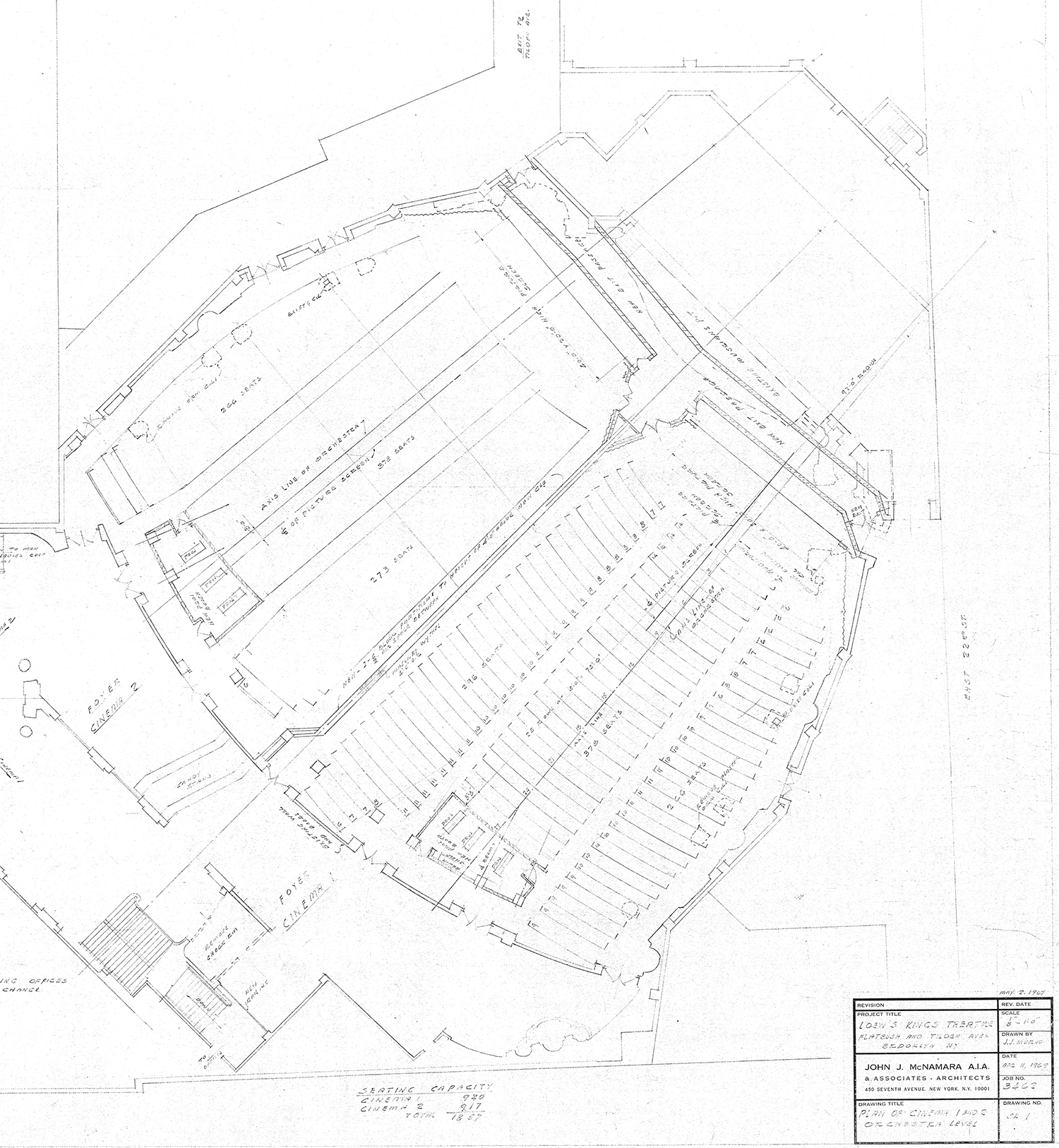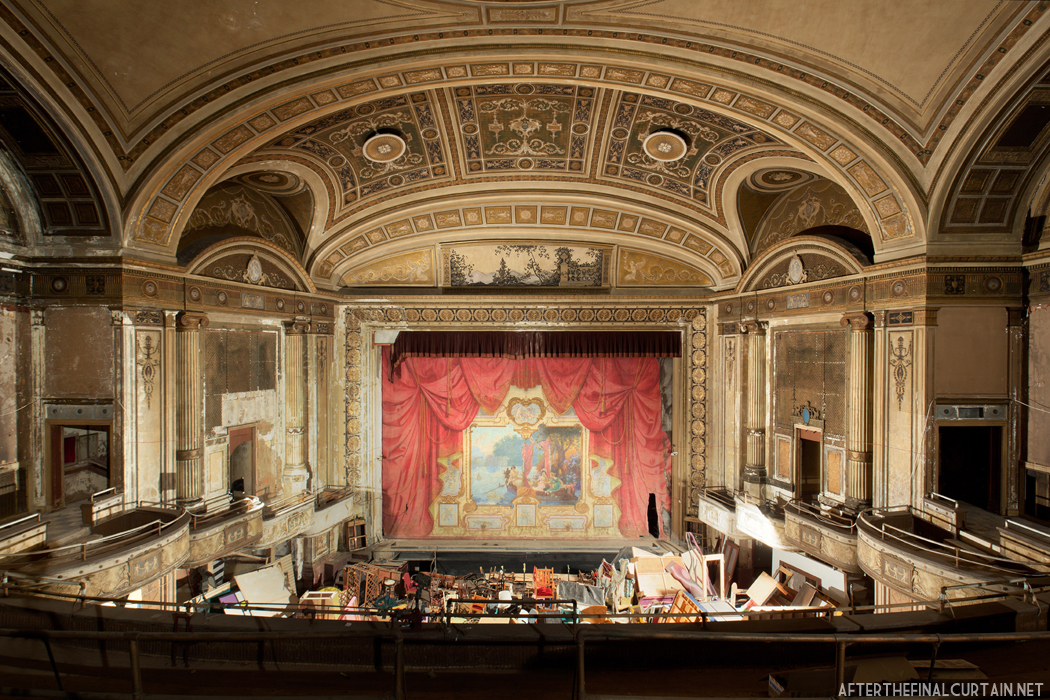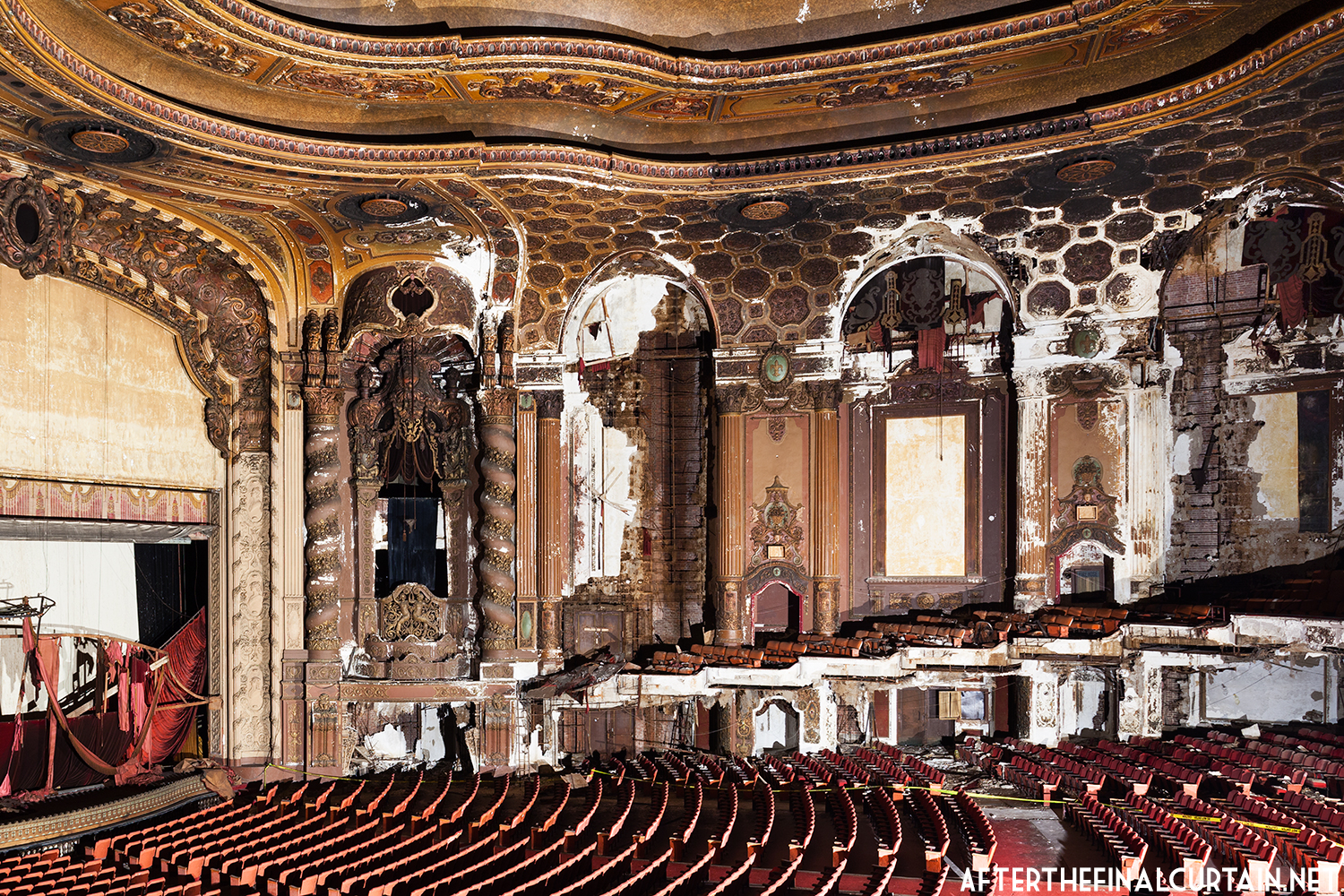Material from for this post was taken from the first three chapters of my book, Kings Theatre; The Rise, Fall and Rebirth of Brooklyn’s Wonder Theater. If you’d like to buy a copy, they are available on Amazon, and on my website. You can find the first three parts at the following links:
https://afterthefinalcurtain.net/2018/09/13/loews-kings-theatre-part-one/
https://afterthefinalcurtain.net/2019/01/22/loews-kings-theatre-part-2-the-early-years/
https://afterthefinalcurtain.net/2019/03/08/loews-kings-theatre-part-3-the-queen-of-the-kings/
 View from the side of the balcony.
View from the side of the balcony.Rumors circulated Loews was interested in selling the Kings in November 1976. Marty Markowitz, then president of the Flatbush Tenants Council, confirmed that the building was up for sale. According to Markowitz, “I know that the building is up for sale. I don’t know if it has been sold yet, but I know that the Loews Corporation would like to sell it.” Markowitz said, “We would like to bring live entertainment to the theater – Broadway-type shows and concerts so that there could be a sort of renaissance on Flatbush Avenue. We mentioned it to the Loews people, but they aren’t interested.” Chet Arnow, the vice president in charge of advertising and publicity for Loews, denied that the Kings was up for sale, but added, “Sure the Kings is up for sale. Every one of our theaters is always up for sale if the price is right. If we don’t get the right price, we’ll continue operating the Kings as usual.” Brunner also denied the rumors and stated that people have been talking about the Kings closing for 20 years. Despite their denials, less than six months later, the marquee read, “Closed: Will Reopen Soon.”
Soon after the theater closed, two churches asked about buying the theater and converting it into a place of worship. There was precedent for this; Loew’s 175th, one of the Kings’ sister theaters, had been purchased by the United Christian Evangelistic Association in 1969 and converted into a church. Another former Loew’s Wonder Theater, the Valencia, closed around the same time as the Kings and was turned into a church two years later when Loew’s donated the building to the Tabernacle of Prayer for All People.
 During the Loew’s Valencia theater’s early years, clouds were projected across the ceiling, giving the illusion of sitting under the stars at night.
During the Loew’s Valencia theater’s early years, clouds were projected across the ceiling, giving the illusion of sitting under the stars at night.Less than a month after closing, the Kings Theater was sold to the Kings Royalty Production Corporation (KRPC) for $718,385, or $2,782,520 when adjusted for inflation. The KRPC was formed for the specific purpose of purchasing and running the theater. Robert Smerling and David Fellman, the owners of KRPC, also owned the American Theatre Management Corporation (ATMC), which had several theaters in the tri-state area. “Loew’s” was removed from the marquee, and it reopened in early June 1977 as simply the Kings Theatre. The first film shown was Day of the Animals, a horror movie starring Leslie Nielsen. KRPC contracted with major movie companies, including Warner Brothers and Paramount, to turn the Kings into a first-run movie theater.
On July 13, 1977, lightning struck a substation near Buchanan, NY and began a chain of events that caused the New York metropolitan area to lose power for around 25 hours. Looting began soon after the power went out. It was especially bad in the Bronx, Harlem, Queens, and Central Brooklyn. Eighty stores in Flatbush were hit, with 49 of them on Flatbush Avenue. The already low attendance and the destruction and looting during the blackout caused many people to stay away from the hardest hit neighborhoods.
One of the first films shown at the newly reopened theater was the follow up to the 1973 hit, The Exorcist. KRPC was banking on Exorcist II: The Heretic being as big a hit as the first one. Unfortunately, this film was considered by many to be one of the worst films ever made, and it languished at the box office. The Kings showed the “Exorcist II: The Heretic” for almost a month before switching to another film. By that point, the damage was done, and the KRPC could not meet expenses to keep the theater open. On Monday, August 29, 1977, the Kings closed again, just six weeks after it had reopened. The last film shown was “Bruce Lee: The Man, The Myth.”
Laurence Lehr, a representative employed by both KRPC and ATMC, claimed that the company closed the theater because it was cheaper to let the bank have it. “When you get monthly electric bills over $7,800 …, how do you expect to do business? You can’t do business in this city. The costs of labor, security, and everything else are ridiculous.” They tried to keep the costs down by rarely using the large chandeliers in the lobby and only turning the marquee on around 9 PM each evening. According to Lehr, the company was aware of the costs of running a theater when they bought it, but was hoping they could turn it around.










































